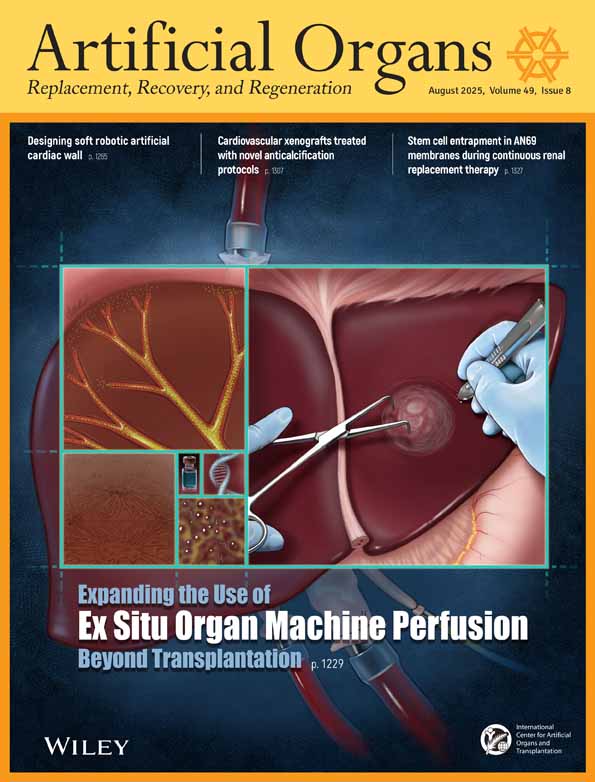Potentialities and Problems of a Novel Bilateral Ventricular Assist System Without Thoracotomy
Abstract
Abstract: Mechanical cardiac assistance can be critical in saving the lives of patients with acute cardiac failure. However, currently used methods of ventricular assistance require advanced technical knowledge and equipment, and only small numbers of patients can be provided with them. Our aim was to develop new cannulas to construct a less invasive biventricular assist system that would permit easy application without thoracotomy. We prepared 2 centrifugal pumps and 4 uniquely shaped cannulas and conducted experiments to investigate the potential and problems of the system. In the first experiment, the system was attached to 6 dogs with ventricular fibrillation to confirm whether our system could maintain cardiac output. In the second experiment, the system was installed for 3 days in 3 goats, and changes in aminotransferases, BUN, creatinine, and plasma free hemoglobin levels were examined. In Experiment 1, it was demonstrated that the system was able to maintain circulation in dogs. In Experiment 2, although the flow rate of the pumps was maintained over 3 days, increased hemolysis and deteriorating renal function were observed. Although these problems need to be solved, the system was still helpful in the management of acute biventricular failure for short periods and may be clinically useful in the near future.




